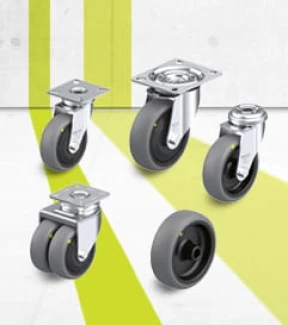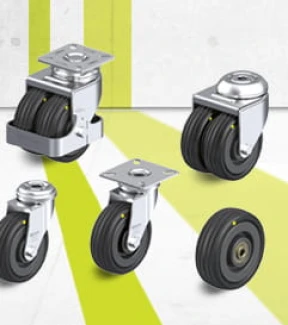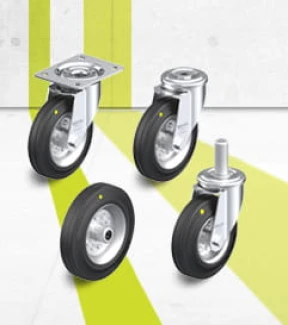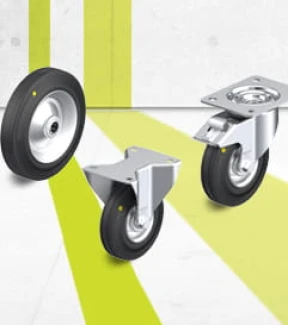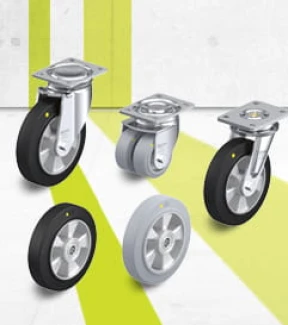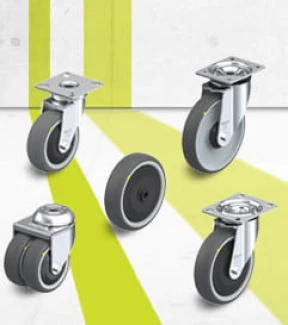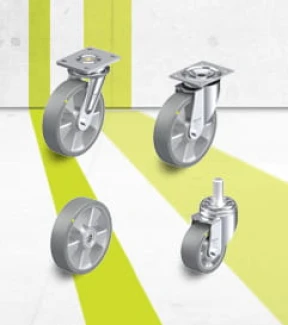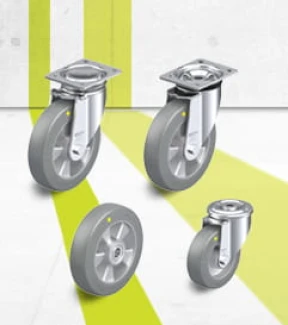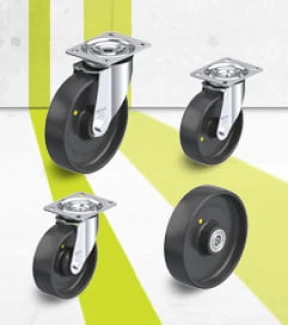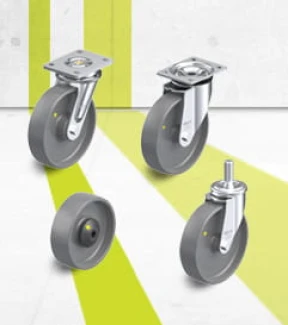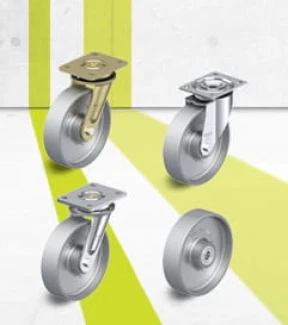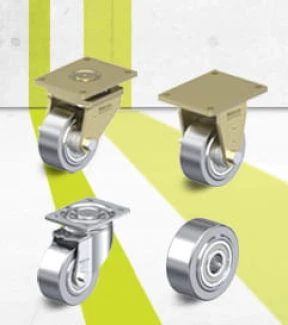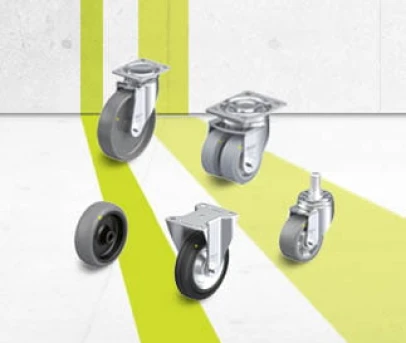
Electrically conductive and antistatic wheel and castors
Providing protection against electrostatic discharge
Electrically conductive wheels and antistatic wheels and castors are used in almost every industrial setting, from medical engineering, electrical and semi-conductor industries to the automotive industry, hospitals, pharmaceuticals and other chemical industrial sectors. These wheels and castors are used everywhere protection against electrostatic discharge is required. Operators and sensitive goods are susceptible to the electrostatic discharge generated by transport units or goods. ESD wheels and castors can be used to prevent these discharges. A wheel or a castor is regarded as electrically conductive if its ohmic resistance does not exceed 104 Ω. These wheels and castors have the product code suffix -EL or -ELS. A wheel or a castor is regarded as having antistatic properties if its ohmic resistance does not exceed 107Ω. To meet these requirements, Blickle tests the wheels and castors on a special test bench in line with DIN EN 12527. Measurements are taken at three different points on the tread of the wheel to ensure that electrostatic potential can be safely dissipated, even in critical applications. Blickle provides a total of 12 different series with an antistatic or electrically conductive version to meet a variety of requirements. These series use rubber, synthetic, metal, cast iron or polyurethane treads.
Electrically conductive wheels and antistatic wheels and castors are used in almost every industrial setting, from medical engineering, electrical and semi-conductor industries to the automotive industry, hospitals, pharmaceuticals and other chemical industrial sectors. These wheels and castors are used everywhere protection against electrostatic discharge is required. Operators and sensitive goods are susceptible to the electrostatic discharge generated by transport units or goods. ESD wheels and castors can be used to prevent these discharges. A wheel or a castor is regarded as electrically conductive if its ohmic resistance does not exceed 104 Ω. These wheels and castors have the product code suffix -EL or -ELS. A wheel or a castor is regarded as having antistatic properties if its ohmic resistance does not exceed 107Ω. To meet these requirements, Blickle tests the wheels and castors on a special test bench in line with DIN EN 12527. Measurements are taken at three different points on the tread of the wheel to ensure that electrostatic potential can be safely dissipated, even in critical applications. Blickle provides a total of 12 different series with an antistatic or electrically conductive version to meet a variety of requirements. These series use rubber, synthetic, metal, cast iron or polyurethane treads.


